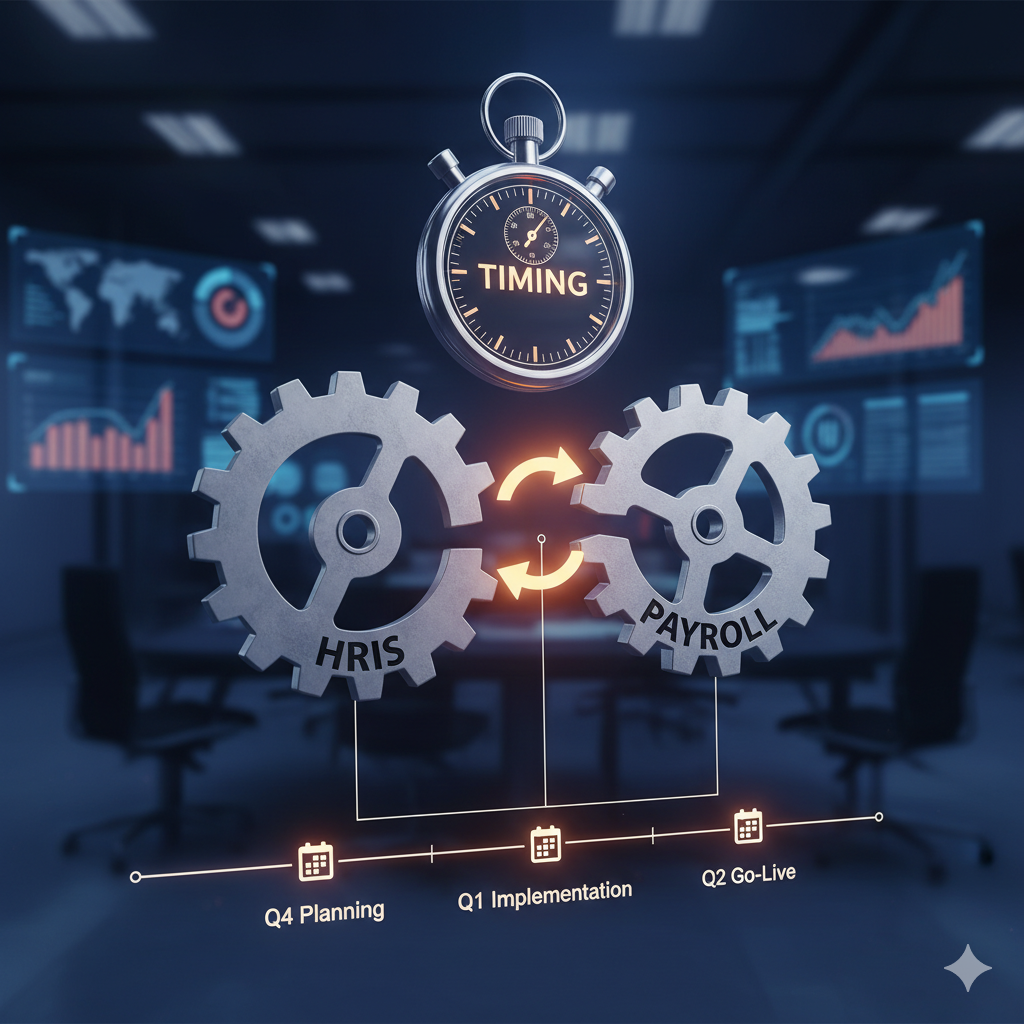Address
Kaypian, San Jose Del Monte City, Bulacan Philippines
Work Hours
Monday to Friday: 8AM - 6PM
Weekend: 10AM - 5PM
Address
Kaypian, San Jose Del Monte City, Bulacan Philippines
Work Hours
Monday to Friday: 8AM - 6PM
Weekend: 10AM - 5PM


Integrated HR. Accurate Payroll.


Integrated HR. Accurate Payroll.

Migrating to a new HRIS (Human Resource Information System) and payroll system is one of the most significant decisions an organization can make. The right solution can streamline HR operations, improve compliance, and save countless hours — but timing the migration is just as critical as choosing the software itself.
In this article, we’ll explore how to choose the right time to transition to a new HRIS and payroll system, along with expert tips to ensure a smooth, low-risk migration.
Many HR transformations fail not because of poor software, but because of poor timing. Migrating too soon or too late can disrupt payroll cycles, affect employee data accuracy, and delay business processes.
Key reasons timing matters:
Pro tip: Always plan your migration during a low operational season — when HR and payroll teams can focus on testing and validation without high administrative pressure.
Every company has a unique rhythm — from fiscal calendars to hiring seasons. The right migration window depends on understanding these operational patterns.
Best times to migrate HRIS and payroll systems:
Avoid:
Before locking in a migration date, assess your internal readiness. This step ensures your data, processes, and teams are aligned.
Migration readiness checklist:
✅ Clean and verify employee data (pay rates, tax info, benefits)
✅ Map old data fields to the new HRIS structure
✅ Train HR and payroll staff on the new system
✅ Communicate timelines to stakeholders and employees
✅ Plan for parallel runs (test payroll in both systems before go-live)
SEO tip: Many organizations search for “HRIS migration checklist” — including a checklist section like this helps boost your search visibility.
Your migration’s success depends on seamless collaboration between your HR team, payroll provider, and IT department.
Coordinate the following:
Pro tip: Build in a buffer of 2–4 weeks for unexpected issues — such as data discrepancies or integration errors.
If your organization is expanding, upgrading systems isn’t just about technology — it’s about scalability.
Ask yourself:
Migrating before these strategic shifts can ensure your system evolves with your business, not after it’s outgrown.
A typical HRIS and payroll migration takes 3 to 6 months, depending on company size and data complexity. Here’s a sample timeline:
| Phase | Duration | Key Activities |
| Planning | 2–4 weeks | Assess readiness, set goals, choose vendor |
| Data Preparation | 3–6 weeks | Clean and map employee data |
| System Configuration | 4–8 weeks | Customize HRIS modules, set permissions |
| Testing | 3–5 weeks | Run test payroll, validate reports |
| Go-Live | 1 week | Launch new system and monitor closely |
| Post-Go-Live | 2–4 weeks | Address issues, finalize reporting |
Even the best-timed migration can fail without proper communication and training.
Best practices for smooth adoption:
Change management builds confidence — reducing errors, support tickets, and resistance to the new system.
Migrating to a new HRIS and payroll system can transform your organization’s efficiency and employee experience — but only if timed correctly. By planning your migration around operational cycles, preparing your data, and aligning teams and vendors, you can ensure a smooth, compliant, and successful transition.
Whether you’re upgrading outdated systems or scaling for growth, the right timing will turn your HRIS migration from a challenge into a competitive advantage.